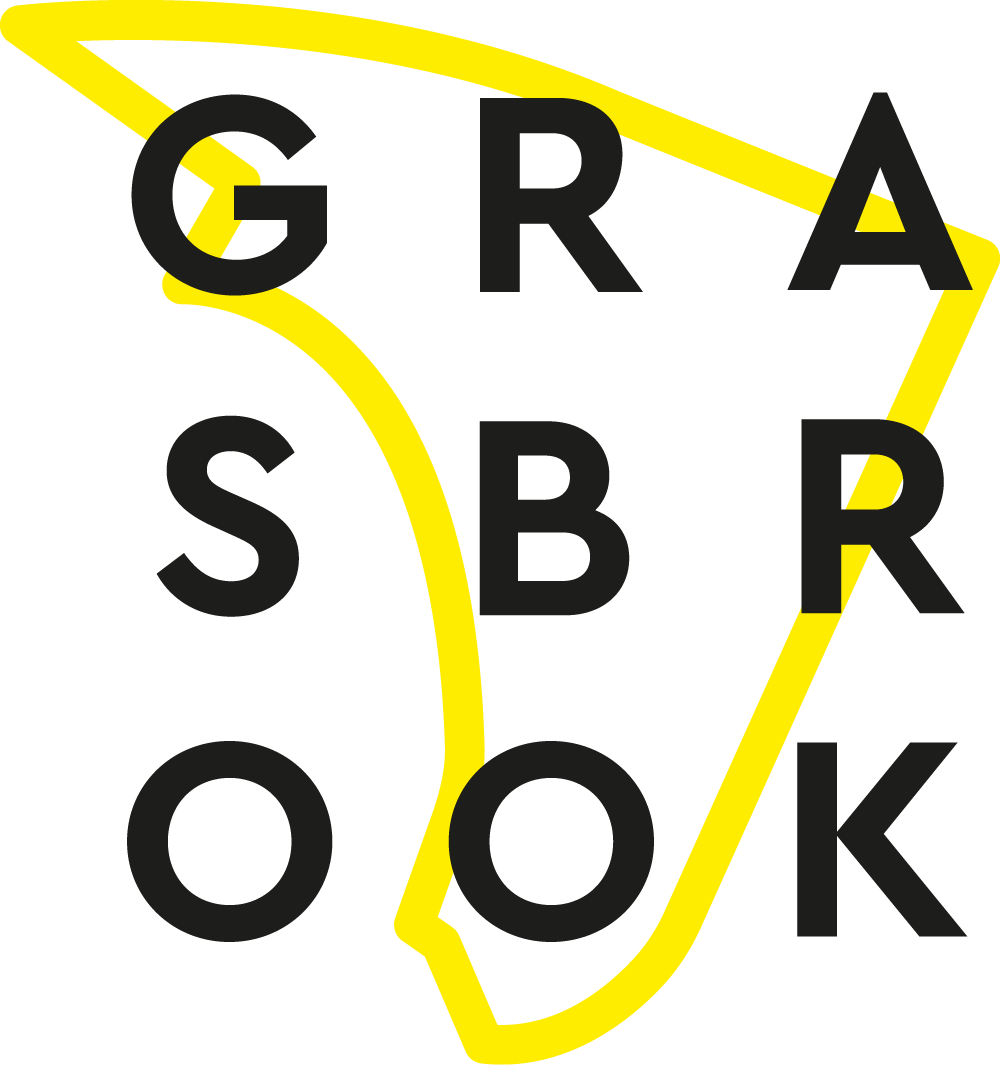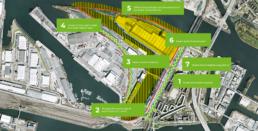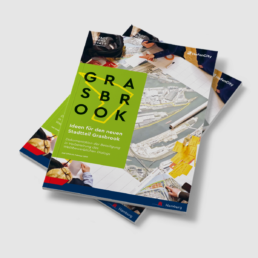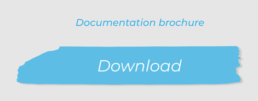Visions and values for Grasbrook
Some general guidelines and core messages for development have emerged from the contributions by citizens, stakeholders and experts. These highlight what Grasbrook will typify in future. The vision formulated here spans a broad scope, exemplifies a fundamental attitude to the important goals and topics, and summarizes succinctly what was important to participants in the previous participatory process.
ISLAND OF OPPORTUNITIES – NEW NETWORKS
Grasbrook is able to develop its own urban scenario on the banks of the Elbe and in the center of Hamburg. The advantages of open waterfront locations provide the district with a special character and an independent identity. Innovations in urban and landscape design, mobility and infrastructure offer the opportunity to become a “place for experimentation” as regards sustainability and a viable urban development. At the same time, the “opening up of the island” in close proximity to the surrounding city is of great importance: existing physical barriers have to be overcome and new footpaths and cycle ways, crossings and transitions to HafenCity, Rothenburgsort, Wilhelmsburg and, above all, to Veddel have to be created. In order to connect Grasbrook and north Veddel, the extension of the U4 subway line to Grasbrook is essential; an extension to Wilhelmsburg should be planned as far as possible. New public ferry services can also provide attractive connections with surrounding districts.
A FINE-GRAINED MIX
The Grasbrook district will captivate through its diverse and mixed neighborhoods. Differentiated urban design and flexible building typologies allow not only a broad spectrum of housing types for different lifestyles and needs, but also a dense coexistence of living and working. Family-friendly housing and intergenerational living are important concepts for the mix. The structure of commercial uses ranges from small to large, allowing a mix of high-tech and low-tech. Different working environments, ranging from large companies to research institutions or small startups, are mixed in with local trades, artisanal manufacturers, urban production as well as culture and creative industries.
VIBRANT NEIGHBORHOODS
It is only taken together that Grasbrook and Veddel form a larger unit. Both will benefit from the social and cultural services, new educational facilities, supply centers and public open spaces. Community spaces, meeting places and social infrastructure such as schools, medical centers, shops, and cultural and sports facilities will be considered from the outset. Central spaces for social interaction promote neighborly exchanges and cultural diversity in the district. Grasbrook’s immediate proximity to the city and the port, on the other hand, requires innovative and exemplary ideas for a compatible coexistence that resolve problems like noise and emissions.
TRANSFORMATION – ACTIVATION AND USE OF EXISTING BUILDINGS
Existing buildings and open spaces lend the district its special identity and will if possible be incorporated into the gradual transformation process by making temporary uses accessible to the public. Consideration should be given to (partially) retaining the Überseezentrum warehouse. Particularly the historically significant listed warehouse G and the neighboring listed buildings F and D should be considered. Grasbrook is made an experience at an early stage. Interim uses form an integral part of its development stages and make an important contribution to the activation of special places such as the river banks and the listed buildings at Saalehafen.
OPEN SPACES AND ACCESS TO WATER
A public park with promenades, several areas with access to the water’s edge and water-related sports and leisure activities can make Grasbrook a city-wide attraction. The unspoilt “wild urban nature” is an existing asset in the district that should be integrated into the open spaces and enhanced as far as possible (increase in biodiversity). Diverse open areas for a diverse neighborhood. Multifunctional designs of parks, green spaces and river banks to serve different user groups and their needs for recreation, interaction and various sports facilities. In the same way, partly flexible open spaces without defined uses are created for appropriation. The Elbuferpark is of particular value to the people of Hamburg and will be developed early on in the process.
LOCAL CYCLES AND SELF SUFFICIENCY
Grasbrook becomes a laboratory for the environmentally sustainable city. Opportunities for sustainable development are offered in comprehensive concepts for local material cycles such as recycled building materials, a high energy efficiency of buildings and the production and efficient use of renewable energies and sustainable consumption through local value chains (direct marketing of regional products and promotion of urban agriculture). The activation and use of local energy sources – e.g. water from the Elbe (tidal power plants and cold/heat pumps), geothermal energy, photovoltaics, solar thermal energy, biogas, etc. –could contribute to long-term decentralized energy production and a self-sufficient energy supply for Grasbrook. Neighboring districts like Veddel also benefit from new energy concepts in the integrated network.
STRONG MOBILITY
Grasbrook becomes a trailblazer for post-fossil mobility. The focus is on the design and organization of a low-car neighborhood and the promotion of alternative mobility providers. Attractive footpaths and cycle ways, the expansion of local public transport, alternative means of transport, mobility providers, rental systems and sharing concepts promote sustainable multimodality. Grasbrook will not only offer land-based mobility but also extend water-based public transportation. Intelligent logistics concepts may use water as a transport route and organize delivery to central delivery and distribution points this will greatly reduce delivery traffic on the roads in the neighborhoods.
COOPERATIVE DEVELOPMENT
Grasbrook can only become innovative and unique if it offers participation opportunities in the development process for the broadest possible spectrum of stakeholders. The experience and ideas of various, also local institutions and initiatives will be integrated into the process. The allocation of building plots is based on the guiding principle of addressing as many different clients/ developers as possible and promoting new concepts for mixed residential and commercial areas as well as a sufficient amount of affordable housing. It supports various cooperative development models for joint building ventures, communal housing and the establishment of commercial premises.
Requests for consideration
During the preceding participation, participants identified spatial requirements and special issues related to the site and in connection with the environment. These should be considered by the planning teams with regard to new solutions for urban design and open spaces. All relevant statements by the participants were translated into “planners’ language” and as far as possible defined on a plan for their incorporation in the urban design and landscape design proposals. The following requests for consideration are to be processed as part of this competition brief.
GRASBROOK–VEDDEL CROSSING
This is where the right choreography is needed: Where will the future education, leisure, culture, shopping and shared open spaces be located to serve the people from Grasbrook AND the people from Veddel and how can these be coordinated in the use concept?
PROPOSALS FOR THE FUTURE USE OF WAREHOUSES D, F AND G
What uses are feasible for the listed buildings? How can the existing listed buildings be incorporated in the flood protection conditions?
SOLUTIONS FOR NOISE EMISSIONS
What urban design measures are there to combat noise pollution from traffic and port activities? How can the development of Grasbrook avoid conflict with the surrounding port?
ACCESS TO THE WATER’S EDGE AND WATER-RELATED USES
How can access be provided to areas of water and which uses will create a water experience? Which opportunities are there for local public transport (ferry services) on Grasbrook and for logistics that use the river as a transport route?
PUBLICLY ACCESSIBLE AND DIFFERENTIATED DESIGN AND DEVELOPMENT OF RIVER BANKS
How can the river banks be used, designed for variety and made attractive for the people of Hamburg by providing access to the water’s edge? How can valuable green spaces and vegetation zones (habitats) be protected and become a distinctive part of the river banks?
EXISTING WAREHOUSES
Can the warehouses be wholly or partly retained as a valuable resource for temporary uses and permanent future uses and incorporated in compliance with flood protection conditions? If so, how can the “critical mass” of housing then be accomplished?
NEIGHBORING NORTH VEDDEL
Which urban and landscape design proposals and uses will make north Veddel a valuable hinge between Grasbrook and Veddel in the future. Can the existing customs buildings be wholly or partly retained, with new uses that contribute to achieving this goal?
Requests for consideration relating to the whole site
SERVICES SHARED BY GRASBROOK AND VEDDEL
This is where the right choreography is needed: Where will the future education, leisure, culture, shopping and shared open spaces be located to serve the people from Grasbrook AND the people from Veddel and how can these be coordinated in the use concept?
OPEN SPACES AS MULTIPLE ACHIEVERS
How can open spaces and parks be designed to meet diverse needs and requirements? Where are the meeting places and communal areas people can make their own? How can the traces of “wild urban nature” be incorporated and biodiversity (flora and fauna) be enhanced?
DESIGN OF LOW-CAR NEIGHBORHOODS
How can Grasbrook become a highly mobile district with a focus on alternative mobility? How can local public transport, footpaths and cycle ways be extended and incorporate innovative mobility concepts like sharing and rental systems and local mobility hubs?
ACCESS TO THE WATER’S EDGE AND WATER-RELATED USES
How can access be provided to areas of water and which uses will create a water experience? Which opportunities are there for local public transport (ferry services) on Grasbrook and for logistics that use the river as a transport route?
PUBLICLY ACCESSIBLE AND DIFFERENTIATED DESIGN AND DEVELOPMENT OF RIVER BANKS
How can the river banks be used, designed for variety and made attractive for the people of Hamburg by providing access to the water’s edge? How can valuable green spaces and vegetation zones (habitats) be protected and become a distinctive part of the river banks?
EXISTING WAREHOUSES
Can the warehouses be wholly or partly retained as a valuable resource for temporary uses and permanent future uses and incorporated in compliance with flood protection conditions? If so, how can the “critical mass” of housing then be accomplished?
NEIGHBORING NORTH VEDDEL
Which urban and landscape design proposals and uses will make north Veddel a valuable hinge between Grasbrook and Veddel in the future. Can the existing customs buildings be wholly or partly retained, with new uses that contribute to achieving this goal?






